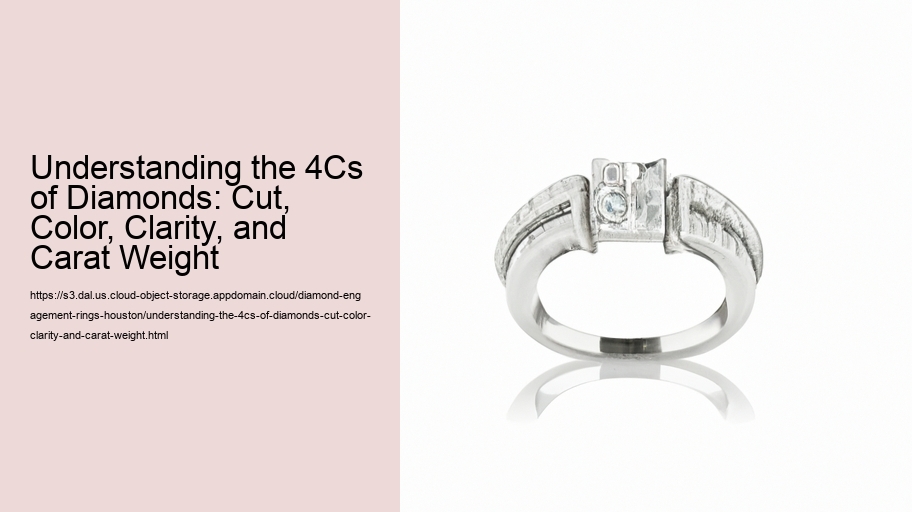Understanding the 4Cs of Diamonds: Cut, Color, Clarity, and Carat Weight
undefined undefined undefined.
Diamonds have long been heralded as symbols of beauty, elegance, and timeless love. Their allure is undeniable, and their brilliance can captivate the eye and the heart. However, not all diamonds are created equal, and understanding what makes one diamond more valuable or desirable than another requires a bit of knowledge. Enter the 4Cs of diamonds: Cut, Color, Clarity, and Carat Weight. These four characteristics are the standard by which diamonds are evaluated and priced. Let's delve into each of these factors to gain a deeper appreciation of what makes a diamond truly exceptional.
First and foremost is the Cut of the diamond. Often mistaken for the shape of the diamond (such as round, princess, or oval), the cut actually refers to how well the diamond has been shaped and faceted. A well-cut diamond will reflect light beautifully, producing that signature sparkle that diamonds are known for. The precision of the cut affects how light travels through the diamond, with an ideal cut maximizing the diamond's brilliance and fire. A poorly cut diamond, regardless of its other attributes, can appear dull and lifeless. Therefore, the cut is often considered the most crucial of the 4Cs.
Next, we have Color. Diamonds come in a variety of colors, but when it comes to traditional white diamonds, less color is generally more desirable. The Gemological Institute of America (GIA) grades diamond color on a scale from D (completely colorless) to Z (light yellow or brown). Colorless diamonds are exceedingly rare and thus more valuable. The subtle differences in color can significantly impact a diamond's value, with near-colorless diamonds (grades G-H) offering a good balance of quality and affordability. It's worth noting that some diamonds come in fancy colors like blue, pink, or yellow, and these can be incredibly valuable as well, but they are graded on a different scale.
Clarity is another critical factor in determining a diamond's quality. Clarity refers to the presence of internal or external imperfections, known as inclusions and blemishes, respectively. The GIA clarity scale ranges from Flawless (no inclusions or blemishes visible under 10x magnification) to Included (inclusions and/or blemishes that are visible to the naked eye). While most diamonds have some imperfections, the fewer and less visible they are, the higher the diamond's clarity grade and value. Clarity can affect a diamond's appearance and its ability to reflect light, making it an important consideration for those seeking a truly stunning stone.
Last but not least is Carat Weight. Carat weight measures the size of the diamond, with one carat equaling 200 milligrams. Larger diamonds are rarer and thus more expensive. However, it's essential to remember that a diamond's value is not determined by carat weight alone. A larger diamond with poor cut, color, or clarity may be less valuable than a smaller diamond with superior ratings in those areas. Carat weight should be considered alongside the other 3Cs to find a diamond that offers the best combination of size and quality.
In conclusion, understanding the 4Cs of diamonds-Cut, Color, Clarity, and Carat Weight-provides a comprehensive framework for evaluating and selecting these precious gems. Each C plays a vital role in determining a diamond's beauty, quality, and value. Whether you are purchasing a diamond for an engagement ring, an anniversary gift, or simply as an investment, knowing the 4Cs will empower you to make an informed decision. After all, a diamond is not just a gemstone; it is a lasting symbol of love and commitment, and choosing the right one is a decision that should be made with care and consideration.
